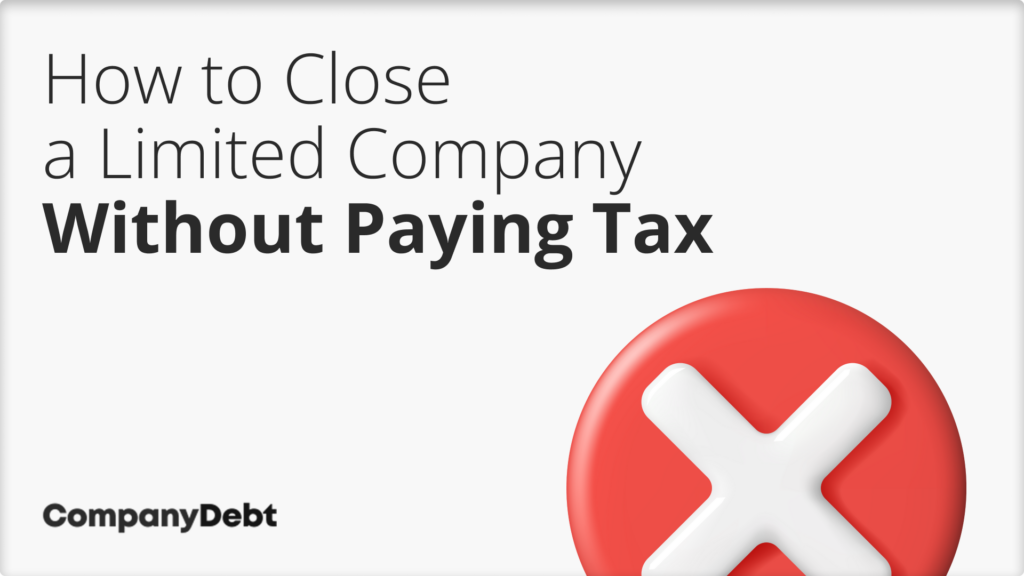
How to Close a Limited Company Without Paying Too Much Tax
Closing a limited company can be a complex process, but with careful planning, it’s possible to minimise your tax burden. As a business owner, you’re likely looking to wrap things up efficiently and keep as much of your hard-earned money as possible
The key steps involve:
- Liquidating company assets
- Settling all outstanding debts
- Distributing remaining profits to shareholders tax-efficiently
To minimise your tax liability, you’ll need to choose the most appropriate closure method for your circumstances.
- Do You Have to Pay Tax if You Close a Limited Company?
- What are the Most Tax-Efficient Ways to Close a Limited Company?
- Using Voluntary Strike-Off to Close Your Company
- Members’ Voluntary Liquidation (MVL) for Tax Efficiency
- The Tax Advantages of Business Asset Disposal Relief
- Is it More Tax Efficient for Me to Choose Strike Off or MVL?
- FAQ: How to Close a Limited Company Without Paying Tax
Do You Have to Pay Tax if You Close a Limited Company?
In short, yes. Closing your limited company doesn’t mean you can escape the taxman. Here’s what you need to be prepared for:
| Tax Type | Description | Rate (2023/24) |
|---|---|---|
| Corporation Tax | Final trading period profits | 19% |
| Capital Gains Tax | On asset value increases | 10% (with BADR) or 20% |
| Income Tax | On shareholder distributions | 20% / 40% / 45% |
| National Insurance | On salary/bonus (not dividends) | 13.8% (employer), 12% / 2% (employee) |
What are the Most Tax-Efficient Ways to Close a Limited Company?
The most tax-efficient ways to close a limited company are:
- Voluntary strike-off: Generally most appropriate for companies with assets under £25,000
- Members’ voluntary liquidation (MVL): This is ideal for solvent companies with retained profits exceeding £25,000.

Using Voluntary Strike-Off to Close Your Company
Voluntary strike-off is the most straightforward and cost-effective method for closing a limited company in the UK, although only appropriate for businesses with minimal assets and liabilities.
This process involves applying to Companies House to have the company formally removed from the register and dissolving it.
To qualify for a voluntary strike-off, a company must not have traded or sold off any stock in the last three months, changed names within the same period, or be threatened with liquidation. Furthermore, it must not have any outstanding agreements with creditors, including the HM Revenue & Customs (HMRC).
From a tax perspective, the key benefits are:
- Lower costs compared to liquidation (costs just £44 for a paper application and £33 for a digital application)
- Potential to distribute remaining assets as capital rather than income, resulting in a lower tax rate
- Opportunity for shareholders to utilise their annual Capital Gains Tax (CGT) allowance
Important Considerations
- Companies cannot distribute share capital when struck off. If your company has substantial share capital, you’ll need to consider a Members’ Voluntary Liquidation (MVL) instead.
- Dormant companies: If your company has never traded or has been dormant and is up-to-date with tax obligations, you may not owe any tax upon striking off.
Members’ Voluntary Liquidation (MVL) for Tax Efficiency
Members’ Voluntary Liquidation (MVL) is a formal process for closing solvent companies, particularly suitable for those with significant assets or retained profits.
This process involves appointing a licensed insolvency practitioner to liquidate the company’s assets and distribute the proceeds to shareholders after settling all debts.
To qualify for an MVL, a company must be solvent, meaning it can pay all its debts within 12 months. Directors must swear a declaration of solvency, and shareholders must pass a resolution to wind up the company.
How MVL Can Help Reduce Tax Liability
- Distributions to shareholders are treated as capital rather than income
- Lower tax rates compared to dividend or salary payments
- Shareholders benefit from Capital Gains Tax (CGT) treatment instead of Income Tax
- Potential for substantial tax savings, especially for higher-rate taxpayers
The Tax Advantages of Business Asset Disposal Relief
BADR, formerly known as Entrepreneurs’ Relief, is a valuable tax incentive for business owners closing their companies[1]Trusted Source – GOV.UK – Business Asset Disposal Relief (BADR). Here’s how it can create a more tax-efficient exit:
- Reduces the Capital Gains Tax (CGT) rate to 10% on qualifying business assets
- Applies to gains up to a £1 million lifetime limit
- Available to eligible shareholders who’ve held at least 5% of shares for two years
- Can result in substantial tax savings, especially for higher-rate taxpayers
Impact of Targeted Anti-Avoidance Rule (TAAR) on MVL
If you’re a director considering a Members’ Voluntary Liquidation (MVL) to close your company, it’s crucial to understand the Targeted Anti-Avoidance Rule (TAAR). This rule, introduced in 2016, could significantly impact the tax efficiency of your MVL if you plan to continue in a similar line of business after closing your current company.
TAAR is particularly relevant if you’re thinking about:
- Starting a new company in a similar field within two years of liquidation
- Continuing to work in the same industry, even if not as a company director
- Transferring your business activities to another existing company
In these scenarios, HMRC might view your MVL as a tax avoidance strategy rather than a genuine business closure. If TAAR applies, the tax benefits of an MVL could be nullified, with distributions treated as income rather than capital gains.
Key conditions that trigger TAAR:
- You held at least 5% of company shares before liquidation
- Your company was a ‘close company’ in the two years before winding up
- You remain involved in a similar trade within two years of distribution
- A main purpose of the winding up is to avoid or reduce Income Tax
If you’re unsure whether TAAR might apply to your situation, it’s essential to seek professional advice before proceeding with an MVL. A tax expert can help you navigate these rules and determine the most appropriate way to close your company while remaining compliant with tax laws.
It’s important to note that TAAR is self-assessed, and there’s no clear guideline on the procedure. This puts the onus on the individual and their advisers to reach a conclusion.
Is it More Tax Efficient for Me to Choose Strike Off or MVL?
The choice between a voluntary strike off and a Members’ Voluntary Liquidation (MVL) depends on your company’s financial situation, future plans, and the associated costs. Here’s a table to help you decide:
| Criteria | Voluntary Strike Off | Members’ Voluntary Liquidation (MVL) |
|---|---|---|
| Assets | Less than £25,000 | Significantly exceeding £25,000 |
| Process Complexity | Simpler, less expensive | More complex, involves hiring a liquidator |
| Tax Considerations | Utilises annual Capital Gains Tax (CGT) allowance | Allows for capital distribution taxed under CGT, potentially lower rates |
| Eligibility for Business Asset Disposal Relief (BADR) | Not applicable | Potentially eligible, reducing CGT rate |
| Cost of Liquidation | Lower cost due to fewer formalities | Higher cost due to liquidator fees |
FAQ: How to Close a Limited Company Without Paying Tax
How can I utilise Business Asset Disposal Relief when closing my company?
To benefit from BADR, ensure you hold at least 5% of the shares and voting rights, have been an employee or director, and have owned the business for at least two years prior to its disposal.
Do I need to pay Capital Gains Tax if I close my company through an MVL?
Yes, the distribution of assets via an MVL is subject to Capital Gains Tax. However, qualifying for BADR can reduce the CGT rate to 10% on the first £1 million of qualifying assets.
The primary sources for this article are listed below, including the relevant laws and Acts which provide their legal basis.
You can learn more about our standards for producing accurate, unbiased content in our editorial policy here.
- Trusted Source – GOV.UK – Business Asset Disposal Relief (BADR)








